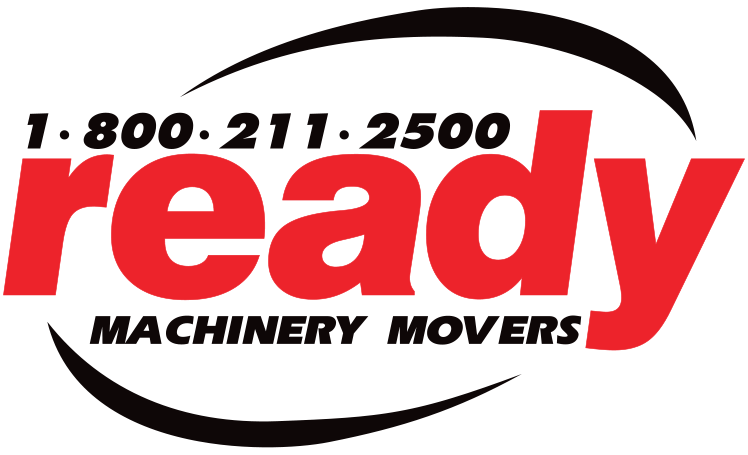Few things in life are as stressful as moving, whether it be a one-bedroom flat or a 500,000 square foot facility. It’s safe to say, though, that moving a gigantic manufacturing plant or warehouse takes more coordination than moving belongings from a home or apartment. Making sure that you consider all possible eventualities will pave the way for a smooth move to a new facility, saving thousands on broken or damaged equipment, and helping you, your staff, and your company focus what you do best.
When preparing for a plant relocation, there are several issues and concerns that you’ll need to address, both before the move happens and during the actual moving process. The following 12 points will help you start and finish the big move efficiently and with as few headaches as possible.
What to Do:
 1. Be proactive and cautious:
1. Be proactive and cautious:
First, be proactive about a possible move – before the transition has been decided or confirmed. Look around your space: Are employees tripping over each other? Is space limited for meetings or storage? Is it difficult to maintain production, especially if you’ve just introduced a new line? You don’t want your customer service or product quality to suffer. Plan the move before it creates delays for your business.
Having said all that, once you’ve decided to move, pause for a moment. Go over the risks of moving, resource demands, legal considerations, and other changes or requirements that a move of this scale will entail. Talk to key stakeholders and employees who will be most affected by either staying at the current location. Remember, triple check that everything you need at the new location is in place: hydro, water, gas, Internet access, road access, etc. The last thing you need is an avoidable surprise at the other end.
2. Re-evaluate your own space: It’s possible that you can find some way to make your own space work before you do a major relocation. Perhaps it just involves moving machinery around your own property to create a more efficient use of space, thus saving you a great deal of time and a even more headaches. A heavy machinery moving specialist can assist with moves within your own factory or warehouse.

3. Communicate the intention to move: A move of this scale should not come as a surprise to your employees, customers, investors, or pertinent government officials. Send out a press release and circulate an internal memo to your staff. When communicating with customers, reassure them that the move will improve service, and inform them of any changes to production timetables. With employees, be open about who will be moving to the new facility (if not everyone will be going) and develop incentives to spark enthusiasm, especially among top staff members. A move can be quite hard on employees, especially if it’s a significant distance from the old location.
4. Create a timeline: Work with employees to create a timeline for the move and use this to assign tasks, such as:
- renovations to the new space
- doing a full inventory of company assets, including any client assets you have in your possession
- setting up phones/Internet
- advertising the new address and making changes to web pages and online listings
- buying new furniture and/or equipment
- moving assets
5. Consider a staggered move:
Some companies maintain two spaces for a short period of time, giving them some wiggle room to move gradually and ease the transition from one space to another.

6. Create a layout of the new facility: Using lean manufacturing principles, create a space that serves you better, ensuring your equipment and tools are arranged in a way that promotes less wasted energy and more coordination. This is an excellent opportunity to audit how the old location worked well or had drawbacks. Initiate changes that will promote a more productive environment, leading to improved output and happier employees.
7. Hire a trustworthy heavy machinery mover: Moving specialized heavy equipment takes experts with the right tools and vehicles to ensure the job is done correctly and safely. A machinery mover that can also stage or store your equipment during the transition is a huge asset. Plan ahead of time and work with the company you hire to work out key details for the move. Come moving day, everyone will be on the same page and the transition will be seamless.
8. Build up inventory: You may want to consider building up enough inventory prior to your move to offset any unforeseen work stoppage and ensure an uninterrupted supply for your customers.

9. Give yourself extra time: You may have a timeline and clear vision for your move, but unplanned events can upset your relocation. Be prepared for a potential glitch in your plan and build in a few days (or maybe even weeks, depending on the size of your business) to make the transition. Understanding that there is a chance that something won’t happen exactly according to plan can help reduce stress for everyone involved.
10. Test all of your equipment after the move: Every single piece of equipment should be tested before being put back into regular production. This will save a lot of time if something goes wrong; you won’t have to look for that one piece that’s broken. By hiring a reputable moving company, you can mitigate damage, especially if they’re qualified to set up your machinery.
11. Perform an internal audit: Once everything is up and running, perform an internal audit to ensure that everything is running well and to look for areas where you might be able to improve processes, making them even leaner than before.

12. Communicate during and after the move: Keeping your team and clientele abreast of the move’s progress and completion will minimize anxiety for both employees and customers. After the move, check in to see how everyone is handling the transition and ensure that processes are in place to deal with any hiccups that arise after the big change.
Altering or moving locations can create confusion, chaos, possible loss of business or work stoppage — but it doesn’t have to be this way. Staying organized and maintaining a vision for how the new space will be set up allows you to focus on your expansion or change of scenery.
For all your plant relocation, planning, and heavy equipment moving needs in North America, Ready Machinery is here to help. Call us today at 1-800-211-2500 to request a quote or use our contact form to send us your inquiries.
